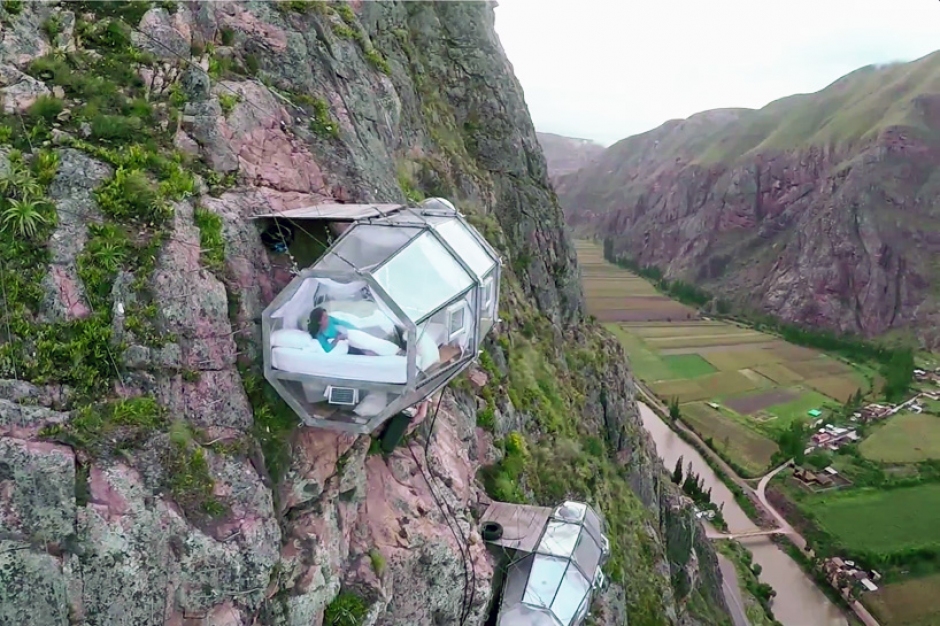 My completely irrational and overpowering fear of street fundraisersIt's getting really bad.
My completely irrational and overpowering fear of street fundraisersIt's getting really bad.

Tech-Know: July
Technology and science news, and why you can use it.
A non-definitive and by no means comprehensive guide to the future. Relevant inclusions only. Brush up your general knowledge in the rapidly evolving geek realms of business, science, technology, software, computing, entertainment, design, and gadgetry. If you're feeling out of your depth because this is about technology and not music, you might enjoy that every news bit below comes preceded by a song lyric.
Read about more tech news in our first column Tech:Know HERE.
Change of heart.
Your heart in high-def, thanks to cSound
What’s happening: GE has developed new software, cSound, based on ultrasound technology, that generates real-time 3D views of our internal organs. cSound intelligently processes all of the data being returned by an ultrasound signal, and uses that information to generate real-time views of organs in 3D. The software can analyse 5GB’s worth of data every second to produce stunning real-time images of what’s going on inside us.
What it means for us: Less invasive procedures, and more accurate diagnosis. The 4D cardiovascular ultrasound machines produces images so detailed doctors can see how blood flow is affected by clots inside arteries, or how much blood is leaking around a valve that’s malfunctioning. The lagtime in traditional ultrasounds is also absent. This means less risky surgery, and better communication between doctors and patients through clear, understandable images.
http://33.media.tumblr.com/03ee4bd6fb926e04179311851ecc1dd9/tumblr_inline_nrfz93FYpK1qzgziy_540.gif
He got game.
The Commodore 64 Phone That You Can Play Commodore 64 games on
Commodore’s made a custom version of an Android OS phone, with emulators pre-installed, so you can play all those old games you grew up with - Donkey Kong, Tetris, Mario Bros – on your phone (you’d hope the full catalogue would be available, anyhow). The branding is pretty cool. The phone launches later this week throughout Europe, at $300US for the 16BG/2GB ram model and $365 for the 32GB/3GB ram model – hopefully an Australian release will follow.

Rocky Mountain High
Sleep pods 120 metres above Peru’s iconic Sacred Valley
What’s happening: Natura Viva, a Peruvian tour company, have hung transparent capsules off the cliffs of Peru’s Sacred Valley, and they overlook some of the most beautiful scenery and small villages in the area. They’ve – measuring 24 x eight metres, they’re made from polycarbonate and and aluminum, and feature sleeping, living and bathroom areas. The only catch is, you have to trek up a 120 metre steel ladder embedded into an almost-sheer cliff face to get to your bed! You can also zip line to them.
What it means for us: If you can’t handle sleeping on the top bunk of a bunk bed due to falling out of bed concerns, this is probably not the one for you. If you have mile-high fantasies, this is probably your ultimate honeymoon destination. The view from the loo is pretty great:


Face 2 Face
Facebook Changes Advertising Charging Methods
What’s happening: From now on, Facebook is defining clicks in its CPC model: advertisers who buy ads on a CPC (cost-per-click) basis will only have to pay when users actually click a link to their brand’s website or app - they will no longer have to pay when when the user likes, shares, or comments on the post: which means advertisers will only be paying for straight clicks, not engagement.
What it means: Advertisers will likely have to pay higher rates, but return on investment will be higher, and metrics will be sharper. Jerry Daykin, Global digital director at marketing company Carat, told Business Insider that this “makes sense…The kind of content that best drives likes and comments is probably quite different [than the content that drives clicks], and there’s little evidence to show that those metrics ultimately drive business results on a macro level.”
Got To Be Real
HTC's VR headset Vive
What’s happening: I feel like everytime I visit a tech website lately there’s an account of a journalist whose been to a trade show or developers conference that’s tried out X company’s version of a virtual reality headset, and is waxing lyrical about it. This is another one of those - a journalist’s experience of HTC’s virtual reality headset Vive – is a pretty compelling read. He details stuff like being positioned in an Italian kitchen, and grabbing ingredients to make a stew, moving around like a chef with full mobility – amazing. HTC and Valve are aiming to release the Vive before year’s end.
What it means: The ability for us to experience live music and sports experiences from around the world, medical benefits, military simulation, object / model manipulation for engineers and architects…and when virtual experiences go from being singular person experiences, to social experiences, it will be a whole new ball game. Plus, think of the education benefits for kids - remember when you were a kid and you had to learn about colonial settlers and shipwrecks? Now you can just go a million miles under the water and walk around on the goddamn shipwreck. And to think, when I was young I thought being able to walk around a computer castle on that Mind Maze game on Encarta was the height of virtual sophistication.

Lighthouse
Xbox One & Phillips Hue team up for well-lit gaming
What’s happening: Immersion is a powerful force in any game or movie, and Firma studio has just stepped it up, adding Phillips Hue syncing to its Xbox One platformer Chariot, so the lights in your lounge room can create the atmosphere your gaming experience needs.
What it means: When you kill an enemy, your house’s light-bulbs will turn red; or your living room might go green if you’re walking through a rainforest. Philips is partnering with Syfy as well, to produce a special “light track” for its documentary about sharks and tornadoes, Sharknado 3: Oh Hell No! . Hue lights will be set to shark attacks: think soft blues, bloody reds, and great whites. A Hue kit currently costs $200, however. So you might just have to make do with throwing some spare change in the direction of your little bro and asking him to flick the lights on and off during an attack. And so far it doesn’t work with any other games, but we have hopes of one day having a lounge room that flashes blue and red when the police are on your tail in Grand Theft Auto.

Space Jam
Pluto, in high-res
What’s happening: This week in science news all the attention was on Pluto, as NASA released the the clearest image yet of Pluto's largest moon Charon yet (Although it is considered a moon, Charon is so big compared to Pluto that the two space rocks actually orbit each other, like binary planets), as well as images of Pluto’s surface, zoomed into less than one percent. That’s crazy close (remember, this planet is pretty far away). These images have given us the most scientific data we’ve ever been able to get about Pluto. So what did they find out? Well, on Charon, there’s a big dark bit up the top, that researchers have nicknamed "Mordor." There’s also a deep canyon, and a series of troughs and cliffs made that extend about 600 miles across the planet from the northeast to the southwest.
On Pluto itself, there’s no “impact craters” in any of the scans, which means the surface of Pluto is very young relative to the rest of the solar system. There’s also mountains about 3,350 meters high, that are likely made of a type of water-ice bedrock. The mountains probably formed less than 100 million years ago, according to NASA and might also still be growing: previously icy worlds on planets have only been geologically active if they’re orbiting much larger bodies, so scientists are now looking into how the geological activity on the planet is powered.
What it means: NASA will spend the next 16 months analyzing the new data, releasing both images and scientific observations along the way. This image (and the images of Charon) are just the beginning.

Related Articles:
 My completely irrational and overpowering fear of street fundraisersIt's getting really bad.
My completely irrational and overpowering fear of street fundraisersIt's getting really bad.
 No Money Weekend July 17Your essential nation-wide cheapskates event guide.
No Money Weekend July 17Your essential nation-wide cheapskates event guide.